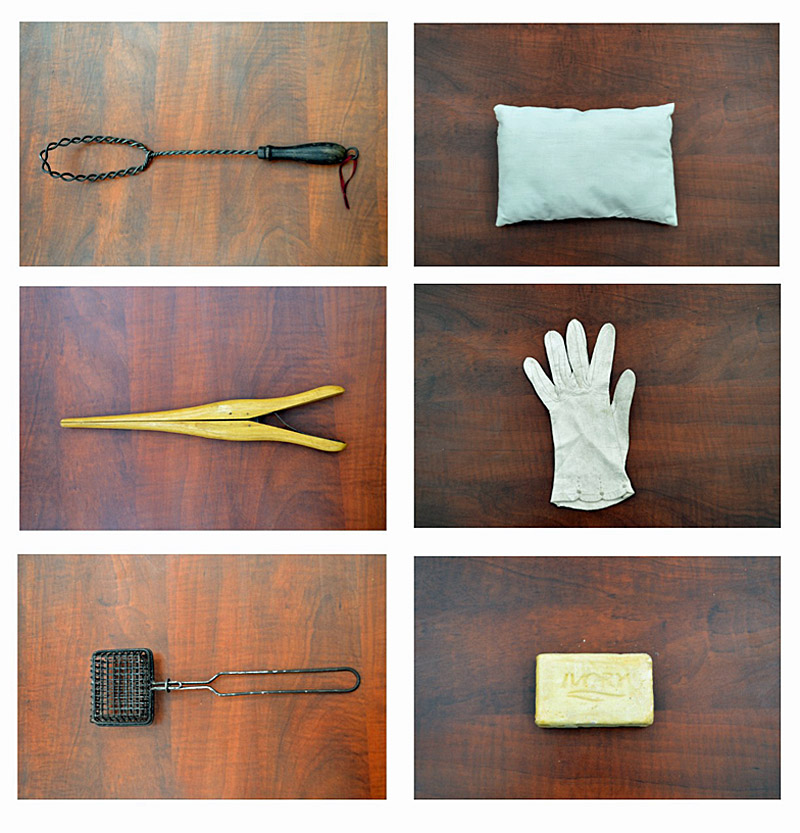At most museums, visitors are met with a strong and specific message: “no touching.” It’s a message that is most often repeated to children, because as adults we assume that young museum visitors will be the most tempted to touch. Keeping our hands to ourselves is an important part of museum-going behavior because museums are stewards of rare, fragile and valuable objects that need to be protected. As museum educators, part of our job is teaching children to be respectful museum-goers, but there is value in experiencing museums with all of our senses—touch included. So how can museums create opportunities for young visitors to get their hands on objects?
At the Frick, our answer to this dilemma is called a “touchable.” Simply put, a touchable is an object that is safe to touch. The ideal touchable is either similar to objects that are in our collection, or is an object that relates to items in our collection in some way. A touchable can really be anything, and they are often incorporated into our school programs. In the Car and Carriage Museum, touchable objects may include sleigh bells, a crank starter from an early automobile, or goggles worn by early motorists. In Clayton, touchables are included in the rooms in which they would have been used. For example, a 19th-century ice cream scoop resides in the Clayton kitchen, while button hooks like the ones Mrs. Frick may have used to get dressed can be seen in her bedroom.
As educators, we find that touchables are an invaluable tool when working with students of all ages. When visiting the Frick, students are often introduced to objects they do not recognize because they don’t use them in their everyday lives. Allowing students to handle an object while they discuss the item’s use and purpose makes the historic object less unfamiliar. There’s just something about handling a historic object—turning a crank or buttoning an old shoe—that strengthens our connections to and deepens our understanding of the past.
One of our favorite ways to use touchables is a game we call “History Mystery.” Students are presented with several objects from the past, and they attempt to guess the objects’ functions just by looking at and handling them. Each of these touchable objects match up with another object that serves as a clue to the historic object’s purpose. Try it with the photos below—touchable objects are on the left, with their matching clue on the right. Scroll to the bottom of the page for answers. Good luck!

Answers:
1. Pillow fluffer: Rather than fluffing your pillows with your hands, you would hit the pillow with this tool to keep the pillow fluffed and maintaining its shape.
2. Glove stretcher: Leather gloves shrink when they get wet. After inserting the glove stretcher into one of the gloves’ fingers, you squeezed the handle, causing the other end to open and stretch the leather out to its original size.
3. Soap saver: Instead of throwing away pieces of soap when they got too small, you could put the soap pieces into the cage, and then swish the soap saver around in the dish water.
As educators, we find that touchables are an invaluable tool when working with students of all ages. When visiting the Frick, students are often introduced to objects they do not recognize because they don’t use them in their everyday lives. Allowing students to handle an object while they discuss the item’s use and purpose makes the historic object less unfamiliar. There’s just something about handling a historic object—turning a crank or buttoning an old shoe—that strengthens our connections to and deepens our understanding of the past.
One of our favorite ways to use touchables is a game we call “History Mystery.” Students are presented with several objects from the past, and they attempt to guess the objects’ functions just by looking at and handling them. Each of these touchable objects match up with another object that serves as a clue to the historic object’s purpose. Try it with the photos below—touchable objects are on the left, with their matching clue on the right. Scroll to the bottom of the page for answers. Good luck!
Answers:
1. Pillow fluffer: Rather than fluffing your pillows with your hands, you would hit the pillow with this tool to keep the pillow fluffed and maintaining its shape.
2. Glove stretcher: Leather gloves shrink when they get wet. After inserting the glove stretcher into one of the gloves’ fingers, you squeezed the handle, causing the other end to open and stretch the leather out to its original size.
3. Soap saver: Instead of throwing away pieces of soap when they got too small, you could put the soap pieces into the cage, and then swish the soap saver around in the dish water.

